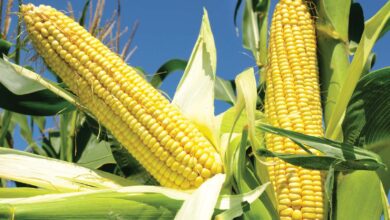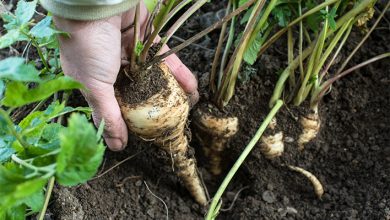Peach Tree Leprosy: How to Identify It? How to combat it?
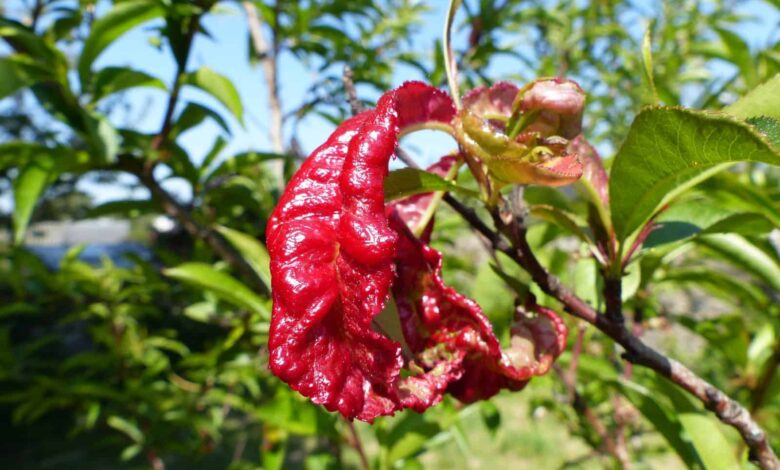
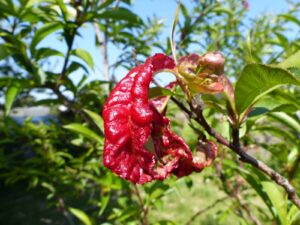 Peach tree leprosy is one of the most frequent diseases suffered by this type of plantation .
Peach tree leprosy is one of the most frequent diseases suffered by this type of plantation .
Knowing her thoroughly will be one of the most important keys to attend to her and attack her correctly.
Are you interested in everything that has to do with this topic? So keep reading. It will take you 5 minutes
To learn more about pests and diseases of the peach tree, see this article.
What is peach leprosy?
It is a disease that consists of a fungus (fungal condition) that appears in peach plantations.
It is easy to recognize by the appearance of wrinkled and reddish leaves on the spring shoots. We will be able to observe bulges (dents).
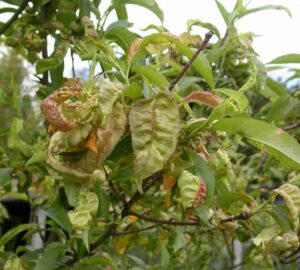 Due to the above, peach tree leprosy is also called “Dent” . While its scientific name is » Taphira deformans «.
Due to the above, peach tree leprosy is also called “Dent” . While its scientific name is » Taphira deformans «.
After about 45 days into the bud, diseased leaves are shed from the tree .
Due to the above, the tree tends to weaken, bearing poor fruit. If leprosy is not properly treated, the tree can die.
Peach leprosy is considered a serious disease for these fruit trees.
What fungus is responsible?
 The responsible fungus is the ascomycete type , which develops on the surface of the cuticles of the leaves .
The responsible fungus is the ascomycete type , which develops on the surface of the cuticles of the leaves .
This type of ascomycete fungus sometimes pierces the leaf to fructify on the outside .
In this way, it produces varieties of microscopic germs, which help it to perpetuate itself in said plant .
These germs have the peculiarity that in the winter they stick to the bark of the branches, as well as on the stems, and on the leaves that have fallen to the ground.
Then, when spring arrives, these germs obtain better climatic conditions; thus they germinate in the shoots, with which the disease persists.
How do we identify peach tree leprosy?
 Peach tree leprosy is easily identified by the lesions or bumps (dents) it causes on the tree.
Peach tree leprosy is easily identified by the lesions or bumps (dents) it causes on the tree.
It is important to note that the entire green structure of the tree can be affected by bulges, in many cases the fruits are touched as well.
Look at the leaves of the peach tree
Delving a little more into the symptoms that identify this disease, we have that it is easier to appreciate it (as already said) in the leaves.
Since it is in the leaves where the most visible and notorious lesions are evident. That is, the characteristic bumps are shown.
Even in the newest and smallest leaves, the disease can appear .
Usually the bumps are marked with their convexity on the upper face of the affected leaf; these may or may not be linked together.
But there are cases when the lesions can go through the blade and appear at the bottom.
Generally the dents are located (although this is not a rule) in the central part of the blade, close to the primary rib.
The bumps are attached to each other
It can also be observed with the development of the disease that the lump formations join with each other.
In other words, the appearance and health of the tree are highly compromised with the advancement of leprosy.
In many cases the leaves fall off; so the very life of the tree is at its limit, in many cases killing it.
We cannot overlook the fact that peach leprosy is especially lethal in young trees.
What treatments can we apply?
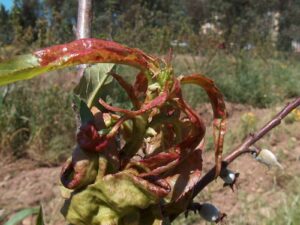 The treatments that can be applied to combat peach leprosy are varied but with a certain relationship between them.
The treatments that can be applied to combat peach leprosy are varied but with a certain relationship between them.
Tear off infected leaves
On the one hand , the infected leaves are usually torn off, this helps but is not a guarantee by itself.
Prevention is highly advisable (perhaps the most effective solution for this disease), for this there are some strategies.
Use combined strategies
Among the alternatives is the multipurpose treatment during the winter . Winter oil is used in combination with a DNOC type insecticide.
Also during the sprouting of the tree buds , dictyocarbamates are used , among which TMTD, Ziram and Captan stand out.
Cu fungicides can be applied (before bud movement), this must be repeated after two weeks.
These are some of the most common and effective strategies to combat peach leprosy.


